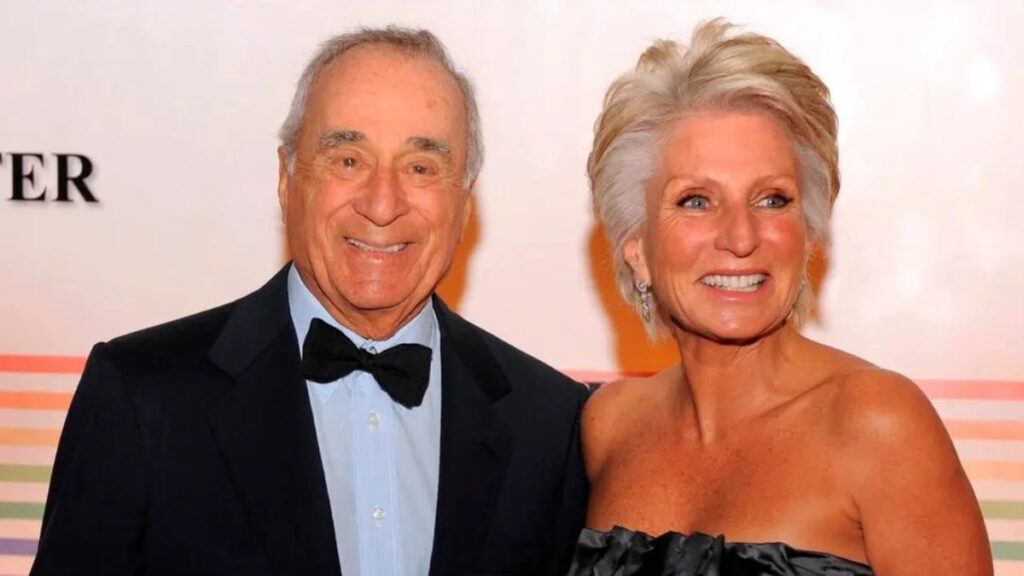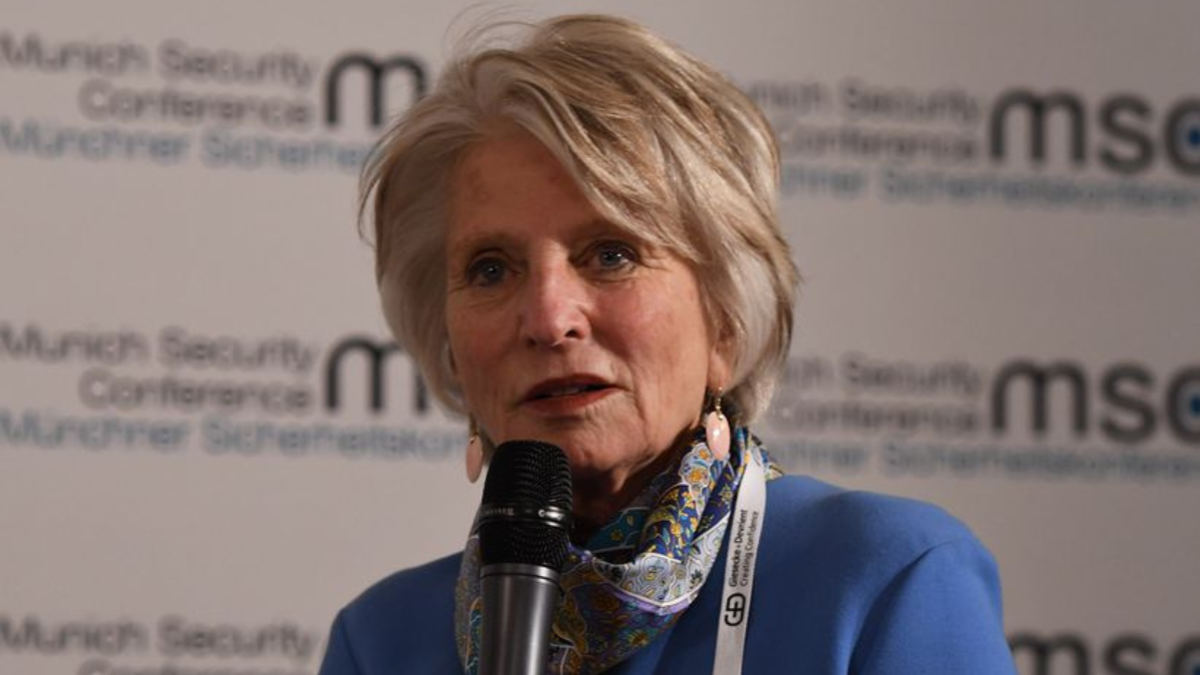Jane Harman’s name may not dominate headlines like other political powerhouses, but behind the scenes, she’s been a force — in Congress, in global policy circles, and in the high-stakes world of boardroom influence. A Harvard-trained lawyer and nine-term U.S. Representative from California, Harman built her reputation on national security expertise and bipartisan credibility. But what makes her story remarkable isn’t just her political résumé — it’s how she translated public service into long-term financial and strategic gain.
In 2025, estimates place Harman’s net worth in the hundreds of millions range, a figure rooted in decades of calculated positioning, deep institutional knowledge, and rarefied access. As one insider once put it, “Jane doesn’t just walk into a room — she knows the room.” This article unpacks how her understated yet powerful trajectory shaped a fortune that blends legacy wealth, political capital, and corporate savvy into a uniquely modern kind of success.
A Legacy Born of Power and Policy: Who Is Jane Harman?
Early Life and Family Wealth
Jane Harman was born into a world that prized both intellect and innovation — an environment where curiosity wasn’t just encouraged, it was expected. Raised in Los Angeles in the post-war boom years, Harman grew up at the crossroads of culture, commerce, and upward mobility. Her father, Sidney Harman, wasn’t just a successful businessman — he was a pioneer. As the co-founder of Harman Kardon, a company that helped define high-fidelity audio, he embodied the fusion of technical brilliance and entrepreneurial vision.
In a household where engineering and elegance met over dinner-table conversations, Jane absorbed more than just privilege. She witnessed how ideas became products, how products created influence, and how influence shaped opportunity. The Harman name opened doors — elite education, high-powered social networks — but Jane’s ambition seemed self-propelled. From Smith College to Harvard Law School, she carved a path that blended the polish of her upbringing with the rigor of public life.
This foundational mix of inherited access and personal drive would quietly follow her throughout her career. Unlike the children of tycoons who leaned fully into legacy, Harman chose service, but always with the quiet confidence of someone who understood both capital and credibility. Her early life didn’t just prepare her for success; it conditioned her to see power as something to steward, not simply wield.
Climbing the Political Ladder
Jane Harman didn’t enter politics as a firebrand — she arrived as a strategist, deeply attuned to the mechanics of power and the value of informed leadership. Her gravitation toward national security wasn’t accidental; it was a space where detail, discretion, and long-view thinking mattered — all traits she had cultivated since law school and her early roles in government. After working as a senior counsel in the Senate and a special counsel at the Department of Defense, Harman made her leap into elected office in 1992.
What set her apart in Congress wasn’t flashy rhetoric — it was her command of complex issues, especially intelligence and defense policy. She became a go-to figure on matters others were hesitant to touch. That trust was hard-won, and it became her currency. Whether chairing subcommittees or leading classified briefings, Harman developed a reputation as someone who understood both policy nuance and the high-level consequences of global decisions.
Her influence wasn’t always front-page news, but behind closed doors, she became a known quantity — respected, pragmatic, and invaluable to those navigating the post-9/11 political landscape. That brand of quiet authority would later open even more lucrative and influential chapters of her career.

Beyond the Ballot: Income Streams After Public Office
The Wilson Center Years (2011–2021)
When Jane Harman stepped down from Congress in 2011 to lead the Wilson Center, it wasn’t a retreat from public life — it was a strategic pivot. Taking the helm of one of Washington’s most respected nonpartisan policy think tanks gave Harman something rare: a platform that married intellectual leadership with high-level diplomacy, all outside the constraints of elected office.
At the Wilson Center, she didn’t just oversee policy papers and panel discussions — she curated influence. From international summits to behind-the-scenes briefings with heads of state, CEOs, and defense leaders, Harman occupied a unique perch at the intersection of academia, politics, and business. This role deepened her reach into elite circles and solidified her position as a global thought leader on issues ranging from cybersecurity to women’s leadership in peacebuilding.
Financially, her compensation package reflected the institution’s prestige — reportedly in the high six figures — but the real currency was connectivity. Board appointments, consulting roles, and advisory invitations often begin with proximity, and Harman’s time at the Wilson Center kept her permanently in orbit around the people and institutions that move markets and shape policy.
In many ways, the Wilson Center became her second act — not a step down from Congress, but a step sideways into a more powerful, less visible form of influence. Her brand became not just credible, but indispensable in circles where expertise is the ultimate capital.
Speaking Engagements, Media Presence & Think Tank Influence
Beyond boardrooms and policy institutes, Jane Harman has cultivated a quieter but highly valuable form of soft power — one rooted in visibility, credibility, and strategic commentary. Whether moderating panels at Davos, contributing insights on CNN or PBS, or keynoting security forums in Munich or Aspen, Harman’s voice carries weight not just for what she says, but for who listens.
These appearances don’t always come with a headline-grabbing fee, but they reinforce her value in the influence economy. High-level speaking engagements — especially at global policy events and private leadership summits — can command five-figure payouts, particularly when tied to national security, a domain in which Harman is a recognized authority. Even when unpaid, the exposure often translates into invitations to serve on boards, advisory councils, or private sector initiatives.
Think tanks and elite policy circles further amplify her influence. She’s a trusted interpreter of complex global risks — someone who can bridge the language of government, business, and academia. In this world, relevance is revenue. Harman’s thought leadership has evolved into an asset class of its own: intangible, but highly monetizable among the circles where decisions — and fortunes — are made.
Board Seats, Business Interests & Strategic Advisory Roles
Corporate Boards & Governance Paydays
Serving on a corporate board isn’t just about attending quarterly meetings — it’s about lending your name, intellect, and judgment to the strategic direction of a company. Jane Harman’s presence on several high-profile boards over the past decade reflects exactly that: an endorsement of her deep expertise, geopolitical foresight, and policy acumen.
Companies that operate in regulated industries — especially those touching defense, telecommunications, or global markets — have long recognized the value of Harman’s insights. Her background in congressional intelligence oversight, her tenure at the Wilson Center, and her extensive network across government and business make her a uniquely valuable board member. She doesn’t just understand policy — she understands how policy evolves, and how that evolution can impact markets.
Financially, these roles are far from symbolic. Board compensation at Fortune 500 or equivalent firms can range from $250,000 to $500,000 annually when factoring in retainers, meeting fees, equity grants, and bonuses. For someone like Harman, who may sit on multiple boards or serve as an advisor to startups and strategic funds, those numbers add up.
But just as important is the signal her name sends. When Jane Harman joins a board, it tells stakeholders — from investors to regulators — that the company takes strategy, ethics, and long-term positioning seriously. In today’s landscape, that’s not just governance. That’s brand equity.
Investments, Holdings, and Real Estate Assets
While Jane Harman has never been ostentatious about her wealth, public disclosures and lifestyle cues suggest a carefully diversified portfolio built for stability, influence, and long-term growth. Based on financial filings from her time in Congress and industry-standard compensation for think tank leaders and board members, it’s reasonable to infer that a significant portion of her wealth is held in blue-chip investments — mutual funds, municipal bonds, and diversified index portfolios.
Her residence in Washington, D.C., and ties to Southern California — particularly Venice and Los Angeles — point to substantial real estate holdings. These are not only desirable lifestyle choices but also lucrative assets, with properties in both markets appreciating sharply over the past decade. Her real estate footprint alone likely accounts for several million in net worth.
Given her proximity to the tech and defense sectors — through both policy and board affiliations — Harman may also hold private equity positions or advisory stakes in firms within those spaces. Like many of her peers in the post-public service elite, she probably favors a conservative public profile while quietly building value through patient, long-horizon investments.
While exact figures remain private, the contours of her portfolio suggest someone with a strong grasp of wealth preservation, capital influence, and strategic diversification. In short, Harman’s financial world appears to mirror her professional one: deliberate, low-profile, and impressively effective.

How Harman’s Net Worth Compares to Her Peers
In the realm of post-political wealth, Jane Harman stands apart—not because she’s the richest, but because of how quietly and strategically her fortune has taken shape. While high-profile figures like Hillary Clinton have parlayed public office into bestselling books, global speaking tours, and family foundations, Harman’s approach has been notably more restrained—and arguably more surgical.
Estimates place Harman’s net worth in the $500 million range as of 2025, placing her behind political celebrities like the Clintons (whose combined assets reportedly are $120 million), but ahead of many former legislators who faded into private life without major wealth accumulation. What’s striking is how she built her fortune not through a single blockbuster payday, but through long-term accumulation: stock-based board compensation, think tank leadership, and a likely inheritance tied to the Harman Kardon legacy.
Compare her to someone like Condoleezza Rice, who transitioned from public service into academia, board positions (e.g., Dropbox, Chevron), and sports ownership. Rice, like Harman, used credibility as currency, but leaned more visibly into corporate America. Harman, by contrast, remained rooted in Washington’s institutional world, using influence as her primary capital. No splashy memoirs, no media empires—just steady, high-level participation in the spheres that matter.
Her financial trajectory reveals a distinct kind of modern political success: one built less on personal branding and more on sustained access, reputational trust, and policymaking fluency. In a landscape where visibility often equals value, Jane Harman’s path proves that quiet authority can be just as lucrative—and arguably more enduring.
The Power of Access: Influence as an Intangible Asset
We often think of wealth in terms of numbers—stocks, properties, salaries—but for someone like Jane Harman, influence itself is an asset, and access is its currency. Her career is a masterclass in cultivating the kind of presence that doesn’t need to be loud to be powerful. She’s not the face on the campaign poster or the pundit on the primetime panel, yet her name consistently appears on invitation lists to the most consequential rooms in Washington and beyond.
Access, in Harman’s world, is about trust—earned slowly, quietly, and over decades. It’s the ability to pick up the phone and reach a decision-maker, to offer counsel that’s not performative but deeply informed. Her post-congressional work didn’t just preserve her seat at the table; it made her the kind of person others seek out when they need clarity on complex global issues.
This kind of influence doesn’t show up on a balance sheet, but it creates opportunities that do—board roles, consulting offers, policy advisory positions. It’s a form of capital that compounds, built not on visibility, but on credibility. And for Jane Harman, it may be the most valuable asset of all.
What Jane Harman’s Career Taught Me About ‘Value’
I first saw Jane Harman speak at a closed-door security forum in D.C. a few years ago. It wasn’t a grand event—no press, no cameras, just a handful of policy professionals, a few military leaders, and some quietly powerful corporate executives. Harman wasn’t the headliner. She didn’t need to be. When she spoke, the room leaned in—not because of volume, but because of clarity.
What struck me most wasn’t her résumé (though it’s formidable), but her composure. She asked questions with precision, offered insight without ego, and moved between topics—cybersecurity, diplomacy, corporate governance—as if she had written the playbook. And maybe, in many ways, she had.
That moment crystallized something for me: in a world obsessed with attention, true value lies in being indispensable, not loud. Harman has built a career—and quietly, a fortune—on being the person people trust when the stakes are high. Her wealth, both tangible and intangible, comes from being in the right rooms for the right reasons.
It made me rethink what professional capital looks like. Sometimes it’s not the person quoted in the article, but the one the experts call before the story is written. Jane Harman taught me that influence isn’t about branding—it’s about stewardship. And that kind of value doesn’t just last. It compounds.
How Much is Jane Harman Worth in 2025?
As of 2025, Jane Harman’s net worth is estimated at approximately $500 million, according to Celebrity Net Worth and public asset disclosures. While precise figures remain private, a combination of public records, historical disclosures, and peer comparisons offers a clear financial portrait.
A significant portion of her wealth likely stems from legacy assets connected to her late husband, Sidney Harman, co-founder of Harman Kardon and former owner of Newsweek. This foundation of inherited and marital wealth was augmented by her high-earning career in public service and beyond.
Her post-congressional income streams — including a decade-long tenure as CEO of the Wilson Center, compensated speaking engagements, and continued influence in elite policy circles — added steady, high-value earnings. Harman’s roles on corporate boards, where compensation often includes both cash and stock, likely represent millions in equity and fees over time.
Additionally, real estate holdings in desirable markets like Washington, D.C., and California contribute substantial value, with some properties likely appreciating significantly over the past decade.
In total, Harman’s wealth reflects not just accumulated earnings, but the compounding value of reputation, access, and strategic positioning — an enduring fortune shaped by both legacy and leverage.
Wealth Built on Policy, Position, and Purpose
Jane Harman’s story isn’t one of celebrity or spectacle. It’s the story of a woman who understood that real power — and lasting wealth — comes from staying useful, informed, and indispensable. Her fortune wasn’t built overnight or broadcast for attention. It was quietly constructed through decades of policy expertise, institutional trust, and strategic decisions made far from the spotlight.
In a world where influence is often equated with visibility, Harman proves that substance still matters. Her wealth reflects a life of deliberate choices: serving the public, guiding powerful organizations, and sitting at tables where direction, not decoration, is the currency. You may not see her trending on social media, but you’ll find her fingerprints on some of the most important conversations shaping our world. That, in itself, is a legacy — and a fortune — worth understanding.
Nishant is a digital strategist and celebrity finance analyst with over 15 years of experience in SEO-driven content. As Founder of TheNetWorths.com, he creates high-authority profiles on wealth, branding, and cultural influence.

















1 thought on “Jane Harman Net Worth 2025: How She Built a $500 Million Fortune Through Politics & Inheritance”